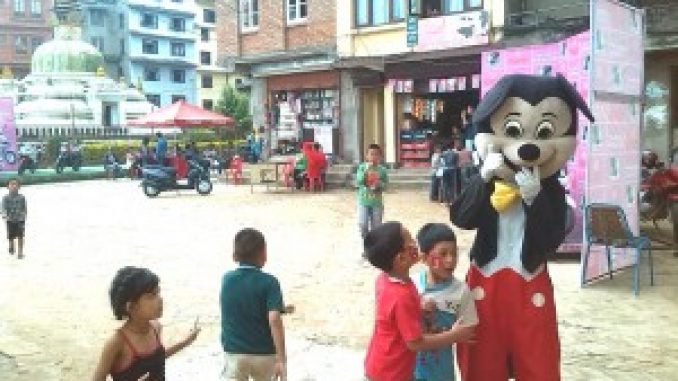
As opposed to the orientalist stereotypes depicting Kathmandu as a place out of the world, “suspended in time” (in this example it is called “Eden” and “Shangri-La”… hic sunt dracones!), the social reality of Nepal reveals an admirable liveliness. After 10 years of Maoist guerrilla, that finally overthrew the monarchy and challenged all the internal balances of power, a new constitution is being drafted: the whole of society is involved in huge debates, that are highgly significant even outside Nepal’s frontiers. How can a “new” modernity be built, that is compatible with the cultures and histories that dwell in the land? This means: what is the role for “ethnic groups”, what part will religion have into public life, how will gender relationships change? Artists and intellectuals (including sociologists and anthropologists) participate in this debates, contributing to make Kathmandu – far from a place “out of time” – a laboratory of postsecularism and “multiple modernities”.
- “Different faces and different voices in Nepal”, PPT on the history and social composition of Nepal, by Neeti ARYAL KHANAL (sociologist, Tribhuvan University Kathmandu) for the project Where there be dragons.
- Two gender interpretations about a hindu festival. Misogynist celebration, or occasion for the meeting among women? Two article appeared in Nepalese press on September 8th, 2013, about Teej, the festival in which women fast to remember Parvati’s fast for Siva: the two texts are examples of two diferent views on religion, feminism, modernity. PDF in spanish – Original articles in english: Tanuja BASNET, “Foisted Festival“, República, and Neeti ARYAL KHANAL, “Let Them Dance“, Kathmandu Post.
- Chiara LETIZIA (2012), “A State Goddess in the New Secular Nepal” [PDF]. Divinity in human form, or child victim of abuse? An Italian anthropologist discusses the case of the Kumari, the Nepalese child-goddess now at the center of a tense debate, that shows how secularization can assume multiple forms. In: Rosati & Stoeckl, Multiple Modernities and Post-secular Societies, Ashgate. See also: Chiara LETIZIA (2012), “Shaping Secularism in Nepal”, European Bulletin of Himalayan Research, 39, 66-104 [link]
- Kanchan G. Burathoki (2012) “The rise and ‘ban’ of the collateral” [PDF in english, with images][spanish translation]. In September 2012 a group of fundamentalists threatened the artist Manish Harijan for his works in which he represented hindu gods and goddesses dressed as North American superheroes. The police shut down the art gallery, letting loose a wave of protests and debate about freedom of expression in the new Nepal.
- “Kalajatra” exposition at Kathmandu Contemporary Art Center in Patan. The hindu festival of Gaijatra (“day of the cow”) in recent years turned into an occasion for artists to express dissent against the government and thesocial order. These are some “bootleg” photos we took in KCAC: Kalajatra photo album :: Article “Canvases for satire“, Kathmandu Post, 21/8/2013.